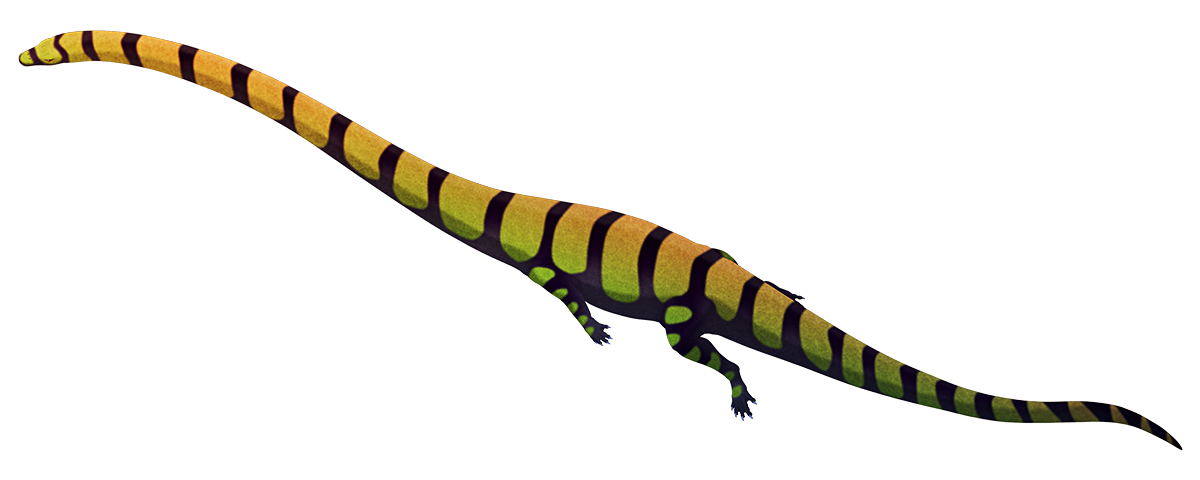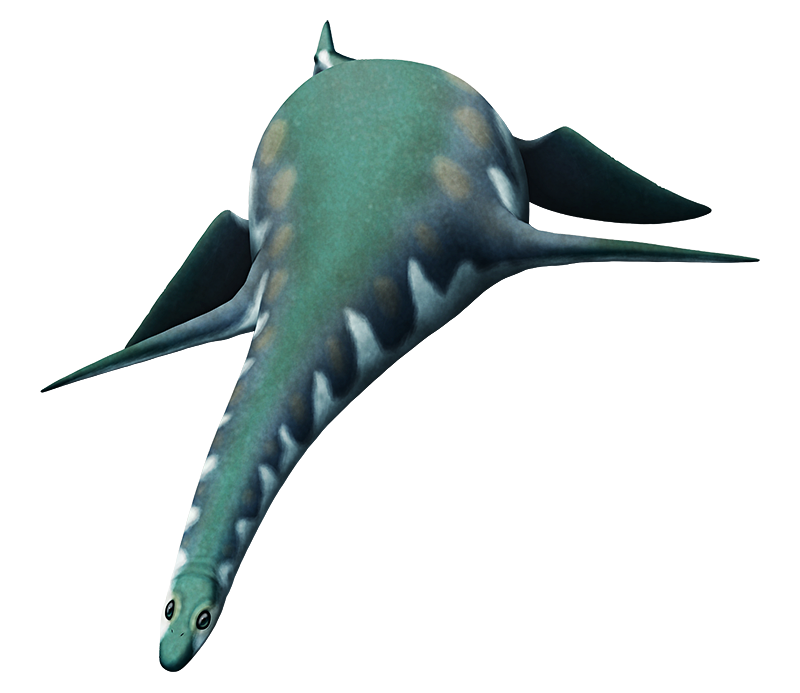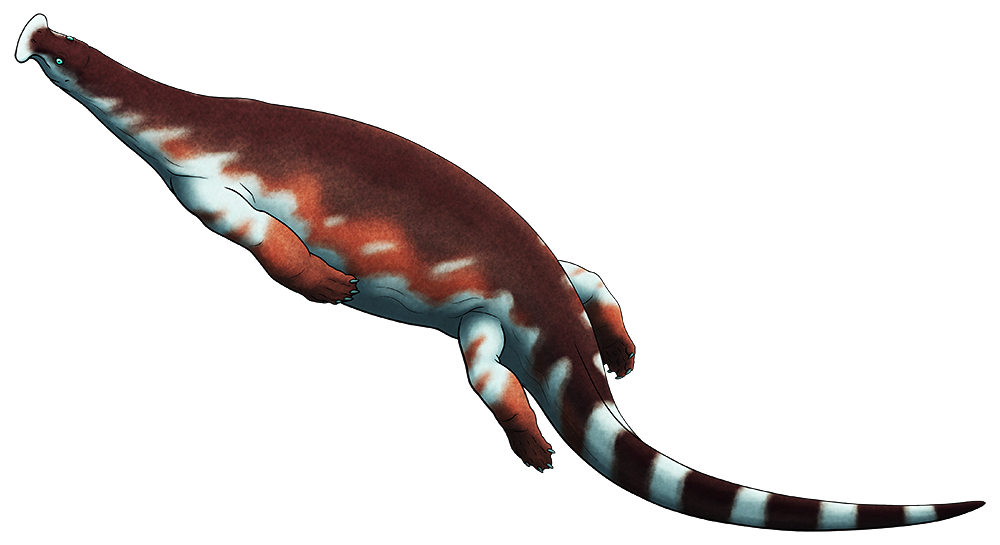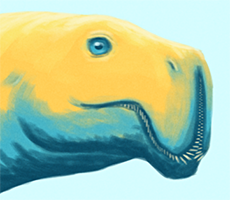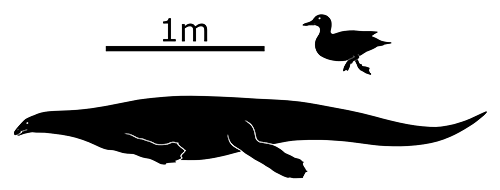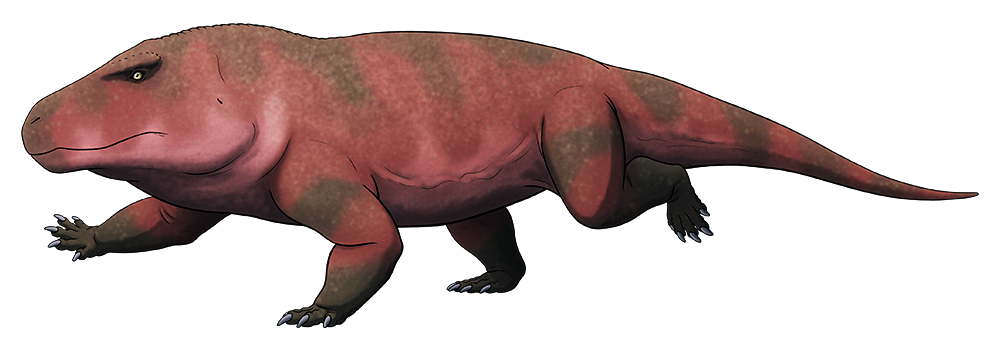Tanystropheus is one of the classic Triassic weirdos, a bizarre archosauromorph easily recognizable with its ridiculously long neck.
Mainly known from mid-Triassic deposits on the Swiss-Italian border, dating around 247–235 million years ago, fossils of the species Tanystropheus longobardicus have been found in two different “morphs” – small forms less than 2m long (6’6″), and larger ones up to 6m long (19’8″).
For a long time the smaller fossils were thought to be juveniles, but while they certainly had juvenile-looking facial proportions they also had very different teeth compared to the larger forms. They had pointed teeth at the front of their mouths and multi-cusped cheek teeth further back, and the “adults” had jaws containing only the pointed teeth, suggesting very different diets and lifestyles between the two size classes.
Extreme changes in dentition and diet during maturation aren’t unheard of in fossil species, but something particularly odd was going on here. Larger forms over 2m long always had just the pointed teeth, and there were no signs of intermediate tooth arrangements at all.
And a new study using x-ray microtomography has given an answer: they weren’t actually the same species!
Turns out the smaller Tanystropheus longobardicus were all skeletally mature adults, already fully grown at that size. The larger ones were a completely separate species occupying a different ecological niche to their smaller relatives, and have been named Tanystropheus hydroides in reference to the mythical hydra.
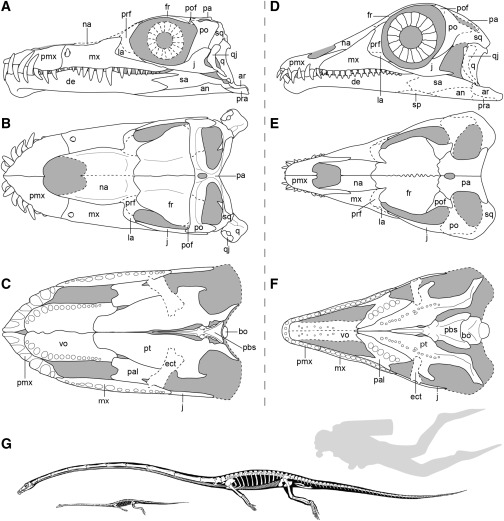
[ From fig 3 in Spiekman, S. N. et al (2020). Aquatic Habits and Niche Partitioning in the Extraordinarily Long-Necked Triassic Reptile Tanystropheus. Current Biology. https://doi.org/10.1016/j.cub.2020.07.025 ]
While the exact lifestyle of Tanystropheus is an ongoing paleontological argument, Tanystropheus hydroides at least appears to have been much more on the aquatic side of things, with nostrils positioned on the top of its snout and its pointed teeth forming a “fish trap” in its jaws.
Stomach contents suggest it mainly ate fast-moving aquatic prey like fish and cephalopods, but its body wasn’t really adapted for strong swimming and so it couldn’t have been catching them via active pursuit. Instead it was probably an ambush predator hunting in a similar manner to some plesiosaurs, using its incredibly long neck and relatively small head to carefully approach prey species without the rest of its body startling them, and then catching them with fast snapping sideways lunges.

